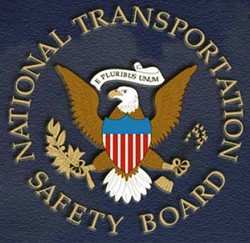Neither Aircraft Performed Any "Abrupt Or Evasive
Maneuvers"
 The NTSB has issued a preliminary report in the November 28th
mid-air collision between a tow plane and the glider it had
released over Crazy Creek Private Gliderport in Middletown,
California. Both the tow plane and glider pilots were killed in the
collision, and both aircraft were destroyed.
The NTSB has issued a preliminary report in the November 28th
mid-air collision between a tow plane and the glider it had
released over Crazy Creek Private Gliderport in Middletown,
California. Both the tow plane and glider pilots were killed in the
collision, and both aircraft were destroyed.
NTSB Identification: WPR10FA068A, WPR10FA068B
14 CFR Part 91: General Aviation
Accident occurred Saturday, November 28, 2009 in Middletown,
CA
Aircraft: SCHLEICHER ASW-27, registration: N127AL, PIPER PA-25-235,
registration: N7023Z
Injuries: 2 Fatal.
This is preliminary information, subject to change, and may
contain errors. Any errors in this report will be corrected when
the final report has been completed.
On November 28, 2009, about 1115 Pacific standard time, a Piper
PA-25-235 airplane, N7023Z, and a Schleicher ASW-27 glider, N127AL,
collided during the landing approach at Crazy Creek Private
Gliderport, Middletown, California. The airplane was operated by
Calsoar, Inc., as a glider tow flight. The glider was operated by
the pilot as a local pleasure flight. Both aircraft were operating
under the provisions of Title 14 Code of Federal Regulations (CFR)
Part 91. The private pilot onboard the glider, and the commercial
pilot onboard the airplane, were killed. Both aircraft were
destroyed during the accident sequence. The airplane and glider
departed Crazy Creek about 1105. Visual meteorological conditions
prevailed, and no flight plan had been filed.
The airplane departed the airport with the glider in tow.
Witnesses then observed the airplane release the glider about 6
miles west of the airport at an altitude of about 3,000 feet mean
sea level (msl). The airplane then maneuvered in the vicinity of
the release, and turned back towards the airport. After release the
glider tracked to the north along an adjacent ridgeline and shortly
thereafter, it turned to the southeast towards the airport.
According to witnesses, both aircraft entered the downwind leg
of the northwest runway about the same time, with the glider on the
right downwind and the airplane on the left downwind. The witnesses
observed both aircraft continue on the downwind, and turn onto
their respective base legs about the same time. As the aircraft
simultaneously turned to final they collided.
The witnesses reported that neither aircraft performed any
abrupt or evasive maneuvers prior to the collision.
Witnesses at the airport stated that the wind at the time of the
accident was from the north at a velocity of between 25 and 35
knots.
Both aircraft came to rest about 1,300 feet east of the approach
end of the runway at an elevation of 980 feet msl. The airplane was
located 40 feet north of the runway centerline, with the glider
located 400 feet to the southwest. The wreckage path began at
approximately the midpoint of the two aircraft, and continued along
a magnetic heading of 340 degrees for about 700 feet. The debris
path consisted of outboard sections of the glider’s right
wing, and a 3-foot section of the airplane's right wing tip.
A 2-foot-long section of the glider’s right wing tip was
located with the main wreckage of the airplane, adjacent to the
right wing leading edge.
The glider was equipped with a Walter Dittel radio transceiver,
and a Becker Avionics transponder. The airplane was not equipped
with a radio transceiver or a transponder.
 Aero-News: Quote of the Day (12.07.25)
Aero-News: Quote of the Day (12.07.25) ANN's Daily Aero-Linx (12.07.25)
ANN's Daily Aero-Linx (12.07.25) NTSB Final Report: Lafferty Jack Sea Rey
NTSB Final Report: Lafferty Jack Sea Rey Classic Aero-TV: The B29 SuperFortress Doc - History in Flight
Classic Aero-TV: The B29 SuperFortress Doc - History in Flight Airborne 12.08.25: Samaritans Purse Hijack, FAA Med Relief, China Rocket Fail
Airborne 12.08.25: Samaritans Purse Hijack, FAA Med Relief, China Rocket Fail



